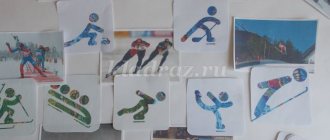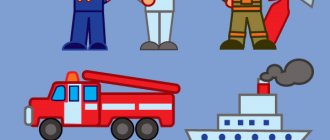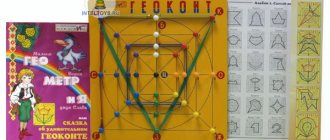Winter sports for children are an opportunity to combine business with pleasure. This includes physical activity, fun time, communication on interests, and hardening.
Many parents are afraid of the temperature conditions in which training takes place, however, cold (if all the rules are followed) has a beneficial effect on all systems and processes occurring in the body. In addition, outdoor winter sports will help improve your child’s health after staying in urban conditions, although most of them are considered extreme and have a high degree of injury. The top most popular are luge; skiing; snowboarding.
Speaking about indoor sports, the choice for children is hockey; skating; figure skating.
Benefits of winter sports
Winter sports for children, like any sports in general, are the first necessity for a developing body, because constant activity is the key to good health and excellent physical shape. The impact of sub-zero temperatures should not be underestimated: they trigger the body’s defense processes, strengthening the immune system no worse than the vitamins that pharmacists so diligently pour into bright jars. Such sports will never make a child bored: he is constantly on the move and is never left alone for a minute. As a result, you always have a good mood, no stress, and good sleep.
Didactic games for children 5-7 years old: Winter sports
Didactic games “Winter Sports” for children 5-7 years old
Author: Konshenko Marina Sergeevna, senior teacher of the Municipal Preschool Educational Institution “Kindergarten No. 153”, Saratov Description of the material: I offer you didactic games for children of senior preschool age on the topic “Winter Sports” .
Main goal: creating conditions for the formation of initial ideas about the Olympic Games and winter sports. This material will be useful for teachers of senior and preparatory groups and will help make not only the educational process more meaningful, but also leisure time. Didactic games to help older preschoolers familiarize themselves with winter sports
Goal: developing interest in physical education and sports. Objectives: • To form initial ideas about the Olympic Games and winter sports. • Develop cognitive activity and curiosity • Increase motivation for physical exercise.
In 2014, our country hosted a bright and large-scale event, the XXII Olympic Winter Games.
At the preschool educational institution we implemented the project “Together we will win!”, dedicated to these games. To make introducing children to the Olympic Games and winter sports more interesting and exciting, I made several educational games. Didactic games, compared to other types of games, have a characteristic feature: they are a source of knowledge in sports and physical education. Making such games in this age of ICT is not difficult. We download pictures, make up games, print them, and laminate them to make them last a long time. And now every year, when the “Winter Sports” themed week is implemented in January, educators use them in their work. In continuous educational activities, ideas about the Olympic Games and winter sports are formed. At the same time, children’s citizenship and patriotic feelings are formed. After all, such a large-scale event as the XXII Olympic Winter Games took place in our country in Sochi. This topic also allows you to develop interest in the events taking place in the country, cultivate a sense of pride in its achievements, and respect for your compatriots-athletes. Children, learning a lot of new and interesting things about the sports life of our country, the Olympic Games, athletes participating in the Olympics, come to the conclusion that physical education and sports are very interesting and beneficial for health. They have a desire to be like great athletes and to play sports. More often there is a desire to implement knowledge about the Olympic Games and winter sports in independent activities. Lotto “Equip an Athlete”. Goal: to teach children to select appropriate equipment and equipment for athletes. Lotto “Pictograms of Sochi 2014” Purpose: to teach children to name sports and select the appropriate pictograms.
Game "Pick up the pictogram". Goal: to consolidate children's knowledge about Olympic winter sports. It is necessary to select a pictogram for the corresponding sport and name it.
Game “Find the Fragment” Goal: developing the ability to compare objects, establish their similarities and differences. Children are given small picture fragments. You need to find which picture they belong to.
Game “Find a Pair” Goal: to teach children to select the same pictograms, made in a strict and laconic, monochrome palette, and the corresponding pictograms, made in the “patchwork quilt” palette.
Game “The picture has fallen apart” Goal: development of attention, memory, thinking, perseverance, fine motor skills. It is necessary to assemble the picture first according to the sample, then without. Images – winter sports, symbols of the Sochi 2014 Olympics. Game "Fold the track." Goal: developing the ability to compare and group by color, developing the color scheme (fixing the names of primary and secondary colors), the ability to distinguish color similarities and differences.
Game “Fourth Extra” Purpose: to learn to name and distinguish between winter and summer sports.
Card quiz Purpose: to consolidate children's knowledge about the Olympic Games and winter sports.
We recommend watching:
Story game for children 5-7 years old Intellectual game for children 6-7 years old. The child’s readiness for school Didactic manual on music for children of the preparatory group in preschool educational institutions Didactic games on ecology for children of the preparatory group of kindergarten
Similar articles:
Ball games for children 6 - 7 years old
Entertaining games for children 7-8 years old
Autumn games for children of the preparatory group in kindergarten
“Connect the dots” tasks for children 6-8 years old
Games for the development of logical thinking for children 6-7 years old in kindergarten
Contraindications for exercise
Before enrolling your child in the coveted figure skating section or placing him under the responsibility of a snowboarding coach, you must consult a doctor. Winter sports cannot be called safe, but if you focus on this, even playing the piano will harm the child - you can even get your fingers pinched by the lid! The list of main contraindications includes:
- Problems related to the musculoskeletal system.
- Disturbances in the development of connective tissue.
- Diseases of the cardiovascular system.
- Respiratory system disorders.
- Kidney diseases.
- Previous injuries (most often head injuries).
How to involve your child in sports in winter?
- Watch winter sports together. Instead of watching a movie, watch sports by watching hockey games, skiing competitions, figure skating and speed skating. Bring some snacks and watch your kids watch the competition. Pay attention to which sports attract children's attention. Find ways to discuss what they find most interesting. This will help you understand what sport they might try.
- Ask your children about their favorite outdoor games or summer sports. Understanding what summer sports your children enjoy will help determine which winter sports pique their interest. For example, the structure of a hockey team may be attractive to a young soccer player; dance element of figure skating - for a young ballet student; the racing nature of skiing or speed skating - for a young runner or swimmer; and snowboard tricks for the young skateboarder.
- Explore the sport during school holidays or on weekends. Involve your children in winter activities during the school holidays. Find open skating rinks or plan a short trip to the mountain and take a beginner ski class. Don't tell your children directly that they play different sports.
- Explore school clubs and sections. As soon as children begin to show interest in sports, support them and find opportunities for them to train. Schools often hold an annual cross-country ski race or something similar. But some schools may be limited in children's sports sections. Try to find a nearby skating rink or local team that will allow your child to participate or observe a practice.
No matter what sport your kids choose, the top priorities should be to have fun and stay safe.
At what age can you engage in winter sports?
Winter sports for children have age restrictions, however, some types can be practiced from the age of four. The difference in indicators is determined by the child’s physical health (development of the musculoskeletal system, stability of the nervous system, etc.) and his readiness from a psychological point of view: the ability to communicate, awareness of possible danger and responsibility for one’s actions.
Of course, a lot depends on the purpose for which you send your child to sports - for the soul or in order to raise a future Olympic champion. You can equip him with a hockey stick and puck as early as 4 years old, but professional training should begin at 9 years old, and then take into account parameters such as weight, muscle mass, endurance and ability to work in a team. By the same principle, you can put a child on skates immediately after he has learned to walk, although it is better to think about serious activities from the age of 6. And, for example, skiing and luge are available for children from 5-6 years of age, snowboarding is possible practice since age 7.
Abstract “Winter sports” (preschool education)
Lesson summary for senior preschool age
Theme "Winter Sports"
Target:
introduce you to winter sports, broaden your horizons, and create a desire to engage in some kind of sport yourself.
Tasks:
Educational:
To improve children's knowledge about winter sports.
To promote the development of the ability to distinguish the simplest relationships between a sport and its attributes. Ensure that the vocabulary on the topic is enriched and clarified. Arouse interest in physical education and sports. Developmental:
Promote the development of logical thinking, attention, memory;
Educational:
To form in children the need for physical activity and physical improvement. Promote the formation of respectful attitudes towards each other. To form ideas about the importance and health benefits of playing sports.
Preliminary work:
Looking at albums and illustrations about sports, conversations about winter sports, the benefits of exercise and physical education;
reading fiction. Add skis, skates, and sleds to the group. There are pictures depicting winter sports on the board. Materials and equipment:
laptop, screen, projector, presentation “Winter Sports”, skis, skates, sleds, pictures of winter sports, pictures of athletes and pictures with the necessary equipment for an athlete.
Progress of the lesson:
Teacher:
- Guys, look at these items and answer my question, what are we going to talk about today? (children’s answers are about sports) Yes, today we’ll talk about sports and types of sports.
Slide No. 2
What is sport?
(children's answers Sport is physical exercise, regular training, sports competitions).
—What do people who play sports call?
(athletes). — What do you need to do to become an athlete? (you need to do exercises every morning, do physical exercise, and toughen up). Why do you think people play sports? What do you think sport gives a person? (children's answers)
. - You said it right. Sport makes a person strong, resilient, and improves health. If you regularly engage in sports and exercise, you will get sick less.
Slide number 3
Didactic game “Good and Bad” Name what winter sports you know? (children's answers)
Well done, you know a lot of sports. — Today we will talk to you about winter sports — All winter sports can be divided into two groups: sports played on snow and sports played on ice.
Slide 4:
Biathlon is a Winter Olympic sport that combines cross-country skiing with rifle shooting.
Slide 5:
Cross-country skiing is a ski race over a certain distance on a specially prepared track.
6 slide:
Alpine skiing is a descent from the mountains on special skis.
Type of sport including
downhill, slalom, giant slalom super-giant super combination. The fastest one wins the competition.
Slide 7:
Ski jumping is a sport that involves ski jumping from specially equipped springboards.
Slide 8:
Snowboarding is a sport that includes high-speed descent from a mountain slope, performing acrobatic elements on a special track, etc. On a snowboard - a monoski with a edging on which fastenings for the legs are installed.
Slide 9:
Freestyle skiing is a trick skiing that includes jumps, spins, and somersaults.
Slide 10:
Speed skating is a sport in which you need to cover a certain distance on an ice stadium in a closed circle as quickly as possible.
Slide 11:
Figure skating is a winter sport in which athletes skate on ice while performing additional elements accompanied by music.
Slide 12:
Luge is a downhill competition on a single or double sleigh on a pre-prepared track. Athletes sit on the sled on their backs, feet first. The sled is controlled by changing body position.
Slide 13:
Skeleton is a winter Olympic sport that involves sliding down an ice chute on a double-runner sled on a reinforced frame, the winner of which is determined by the sum of two races.
14slide:
Bobsleigh is a winter sport that is a high-speed descent from the mountains along specially equipped ice tracks on a controlled sled - bobsleigh.
Slide 15:
Curling is a team sport played on an ice rink. Participants of two teams alternately launch special heavy granite projectiles (“stones”) across the ice towards a target marked on the ice.
Slide 16:
Hockey is a sports game consisting of a confrontation between two teams, which, passing the puck with their sticks, strive to throw it the greatest number of times into the opponent’s goal and not let it into their own. The team that scores the most goals into the opponent's goal wins.
Physical exercise “Winter fun”:
(movements through the text) What do we like to do in winter? Playing snowballs, skiing, skating on ice, racing down the mountain on a sled.
Slide 17-18
— Guys, we have now become acquainted with winter sports. Have you memorized all the sports? (children's answers) - But this is what we will check now.
— Guess the riddles:
There are sticks and there are goals, and everything is okay with the puck!
This type of sport is called... (hockey)
.
And the athlete shoots at the target, And he races on skis. And the sport is called very simply: (biathlon)
.
How beautiful they are on the ice: Both athletes and artists, And they dance just great! Who is this? – ... (Skaters)
.
We know many sports: hockey and skjøring. And they push a stone across the ice - It will be... (Curling
).
Look: the skier rushes, And then flies like a bird, Having made a jump from the peaks. And he helped him... (springboard
).
The sleigh is rushing along the chute, Ice on both sides. What is the name of this sport? – ... (Skeleton)
.
Rushing down snowy slopes is a very courageous sport! And it will help the champions in this sport... (snowboarding)
.
- Well done, you have a good memory!
Slide 18 Didactic exercise: “Find a pair”
— Guys, on your tables there are pictures of athletes and pictures with the necessary equipment for an athlete (all pictures are mixed).
You must find each athlete his own equipment, skis for a skier, a stick for a hockey player, etc.) - Well done, you completed the task. Exercise “Complete the sentence”
- Ice skating...skater. - Sledding... luger. - Riding a bobsled... bobsledder. - Skiing... skier. - Skiing from the mountains... alpine skier. — A snowboarder is going down the mountain on a snowboard. - Runs on skis and shoots from a rifle... biathlete. - He is engaged in figure skating... a figure skater. Results: Which sport did you like best? What do you remember? What does a person need to do to be healthy?
Luge
Each of us remembers how fun it was as a child to sled on snow-covered hills. However, luge is not a joke of entertainment with a group of friends, but quite a serious sport, which has its own subtypes: classic, natural and skeleton. At its core, each of them is a downhill sled run, but with its own characteristics.
Your child will learn to control his own body, which, by the way, will need to be regularly trained: driving a sled is not an easy task.
Before enrolling your child in a section, objectively assess his physical fitness and be prepared that his weight along with equipment and equipment will be taken into account. But this sport is good for both boys and girls from the age of 5, however, for professional activities you will have to postpone the idea until the age of 10.
Types of winter sports
Skis
You can put your child on skis from the age of 5, but it is better to postpone professional training until the age of 10. At a young age, it is important to instill in the child a love and interest in sports, teach him to stand on skis and maintain balance.
Skiing is undoubtedly good for health; it is no coincidence that skiing is included in the curriculum of school physical education lessons.
If your child is interested in skiing, you can send him to a special section. If it is not possible to attend a club, you can practice skiing on your own: purchase special equipment and go out on the ski track with your child. Feeling your presence and attention, the baby will pick up skills on the fly and learn quickly. Don't forget to warm yourself well, take hot tea and a snack to restore your strength.
Please note that skiing has medical contraindications, the most serious of which are disorders of the musculoskeletal system, cardiac and respiratory failure.
Sled
All children love to sled down the hill. This is not only the most popular winter entertainment, but also a very serious winter sport that needs to be learned. Luge is a high-speed descent from a slope on a special vehicle - a sleigh. The child learns to control movements, maintain balance, not be afraid of speed and be brave. The race develops coordination and dexterity: the baby has to quickly react to the situation and independently solve unexpected problems. After all, driving a sled is not as easy as it might seem, especially if the child is wearing very heavy equipment.
To fully learn luge, a child must attend a specialized section where he can communicate with peers, compete and develop skills. If your child trains from childhood, in the future he will be able to build a professional career in luge, which, by the way, is included in the program of the Olympic Games. The enjoyment of winter sports in childhood will be the basis for achieving heights in the future.
Snowboard
Trying your hand at snowboarding would be a great option for children who don't like skiing.
For lessons, it is better to hire a coach who will quickly put the child on a snowboard and teach basic skills. You can start conquering snowy peaks from the age of 5. However, do not forget that snowboarding is one of the most dangerous and extreme sports, so you must follow safety rules. It is better to conduct the first training on flat surfaces or small slopes so that the child learns to confidently stand on the board and balance.
Snowboarding develops courage and fearlessness in a child, and over time the child will take on new and more dangerous peaks. The speed of descent will become faster, and the tricks will become riskier and more difficult. Parents may worry about this, but their child should not be prevented from developing in a sport that he likes. The main thing is to follow safety precautions and not get too cold.
Skates
Ice skating has a positive effect on the physical and psychological health of the child. It keeps the body's systems in order, calms and lifts your spirits. Of course, you cannot do without falls and bruises, but following safety precautions and the correct equipment will protect you from injury. You don’t have to sign up for a section; you can ride with your family and learn different elements on your own.
A passion for skating can develop into professional sports: figure skating or hockey.
Figure skating is a very beautiful, graceful and elegant winter sport, but to fully master it, you need to put in a lot of effort. If you count on a dizzying career in the future, you need to start training at a young age: 5-6 years. You need to be prepared for psychological barriers: figure skating involves constant competition, which can cause complexes in your child. But figure skating contributes to the formation of strong-willed qualities, moral attitudes, the desire to be the best and to train a lot. The baby will also improve coordination, which is necessary to perform masterly figures, and develop the habit of keeping his back straight.
Hockey is an amazing sport that involves staying on the ice and playing as a team. Hockey is suitable for active kids who are bored of just skating and doing pirouettes. The game will help the child develop leadership skills, teamwork, and interaction with other players. Hockey strengthens not only physical health, but also character and personal qualities. Do not assume that the game is suitable exclusively for men. On the contrary, women's hockey is gaining popularity, because girls are in no way inferior to boys.
skiing
Even if you buy the necessary equipment, and the child suddenly decides not to go further along the ski trail, ski poles can be taken for recreational walks in the forest or in the park. Due to the growing popularity of ski resorts, this type of activity has become popular with both adults and children - boys and girls are invited to study from the age of 5-6. At this age, the main thing is to learn how to stand on skis and maintain balance.
Skiing promotes the comprehensive development of all muscle groups, especially the legs, arms and abs. The positive effect on the body is obvious, in addition to this - the development of such important qualities as determination, self-confidence and motivation to move forward without leaving a difficult path. Perhaps the only drawback is the dependence on seasonal conditions: no snow - no skis. Hence the rather large costs: the thirst for snowy slopes can lead you to other countries or sports complexes with artificial conditions.
The Best Winter Sports for Kids
skiing
Ski lessons are available for boys and girls from 5 to 6 years old.
Skiing will help build self-confidence in children, it also awakens a competitive spirit in them and teaches them to correctly perceive victories and defeats. In terms of health benefits, skiing is very important for children, since all muscle groups are involved in the learning process. Skiing is beneficial to a child’s development from both a medical and psychosocial point of view. The main thing is not to force him to train, and also to choose equipment wisely.
Benefits of children's skiing:
- training in proper breathing;
- hardening;
- improving coordination and balance;
- strengthening the vascular system;
- increased endurance and increased body tone;
- strengthening the muscles of the legs and abs.
Snowboarding
Children can start snowboarding from the age of seven - both boys and girls.
A precondition for earlier training is the child's strong legs. This sport develops the ability to maneuver and maintain balance on the board. Snowboarding promotes self-confidence and is a great opportunity for social interaction. It is advisable to practice this sport with an instructor. His guidance will help you improve your riding techniques and avoid injury.
Benefits of snowboarding:
- cardiovascular training;
- development and strengthening of the respiratory system;
- improvement of metabolism;
- strengthening the muscles of the lower leg and thigh;
- improvement of the vestibular apparatus;
- strengthening core muscles.
Contraindications:
- asthma;
- increased bone fragility.
Hockey
Hockey is a great sport for kids looking to gain strength, build endurance, and most importantly maintain body balance.
You can enroll your child in hockey at the age of nine. Although a boy can already put on skates and be given a stick at the age of 4. You can sign up a child with decent body weight, endurance and an extroverted character to play hockey. That is, he must initially be configured to communicate with people and be able to play in a group.
Contraindications for playing hockey:
- diseases of the musculoskeletal system;
- connective tissue problems;
- heart and vascular diseases.
Skating
Girls are recommended to skate from the age of 6.
For boys - in a year or two. Although you can put your child on skates when he learns to stand on his feet and walk confidently. Of course, the presence of parents in this case is mandatory. Figure skates tightly cover the baby's ankles and reduce the risk of injury, so the child can be put on skates earlier than in hockey or speed skating. It is also worth noting the structure of figure skate blades - they are more stable and less dangerous. Benefits of ice skating:
- development of balance and agility;
- strengthening leg muscles;
- improving the condition of the circulatory system;
- hardening;
- improvement of thermoregulation processes;
- in the case of figure skating, the development of musical ear and artistry.
Contraindications:
- musculoskeletal disorders;
- myopia;
- lung disease;
- asthma;
- head injury;
- kidney disease;
- vascular diseases.
Snowboarding
Snowboarding, as an Olympic sport, is not inferior to alpine skiing in terms of popularity. Have you noticed your child's love for skateboarding? Then he will definitely like moving from dry asphalt to a snowy slope! You can start conquering your first, albeit small, peaks from the age of 5.
This sport is one of the most dangerous and extreme, so the first few years of training will take place on flat surfaces or on small slopes. Such systematic and leisurely exploration of snowy areas develops courage in the child and gives motivation to develop, honing his skills. Therefore, during this period, parents can remain calm, but not for long - after the first two years of training, not only your child will grow, but also the degree of risk: the slopes become steeper, the speed is higher, the tricks are more difficult.
Hockey
There are many benefits to playing hockey, even if your child doesn't want to go all the way to the big leagues. And this is the ability to skate, work in multitasking mode, develop communication skills and being in a team.
Since during the first few years children learn to stand on the thin blades of skates, the preparatory stage can begin at 3-4 years old. By the age of 6-7 years, the child will begin to be taught the basics of hockey. It seems that such an intense game is an exclusively male sport, however, girls are in no way inferior in it. Women's hockey is gaining popularity not only in Russia, but throughout the world, and much attention is paid to the education of girls, whose game, perhaps, will bring gold to the country in the future. Like any team sport, hockey is not only about physical health, but also about character, which is strengthened in a team, where it is important to show leadership qualities, but also not to forget about mutual assistance.
Skating
Children can learn to skate confidently from the age of 3-4, and who knows, maybe your child will be so carried away by the process that he will decide to connect his life with hockey or figure skating. Spending time at the skating rink is a panacea for all ailments. This type of load has a beneficial effect on all body systems: from cardiovascular to immune.
Many children have problems with posture, and skates for its formation and maintenance are a real godsend. It is also important that smooth gliding on ice calms and relieves stress, therefore, after receiving a bad grade at school or quarreling with a friend, the child will not withdraw into himself. Of course, ups, let alone downs, cannot be avoided. Only a vigilant coach and good equipment can protect children from injury.
Figure skating
Figure skating is one of the most graceful sports. It seems that it was created exclusively for fragile girls in richly embroidered dresses, however, this is a misconception: who, if not a faithful partner, will help to do the difficult support in a pair performance?
The section is open to children of all ages, although the optimal category is 6-7 years old. It is important to understand that figure skating is a sport bordering on art, so an atmosphere of competition and a demanding coach will only contribute to the formation of strong-willed qualities and the desire to be first. Pleasant bonuses are improved coordination, which in the future will be required to perform fancy figures, as well as alignment of posture - even if the child does not become a professional figure skater, holding his back proudly will already become a habit.
Often the spirit of competition and failure lower self-esteem, contributing to the emergence of complexes. In addition, professional figure skating will speed up your growing up: there will be practically no free time, and you will have to completely forget the taste of sweets.
Children's drawings on the theme of winter sports, step by step with photos
Snowboarding
- Draw a snowboard tilted. Draw the contours of the head and legs according to the diagram.
- Since the snowboarder will be shown crouching, draw in the shins.
- Draw the helmet and mask on the head, complete the design of the knees by rounding them.
- Draw the shoulders and arms.
- Complete the drawing with small details.
skiing
- Sketch the athlete in motion using lines.
- Give a more lively image by completing the torso, arms, and legs.
- Add skis and poles.
- Detail the image.
Figure skating
- Sketch the angle formed by the skater's left arm and body.
- Draw another leg and sketch out the head.
- Draw the girl's left arm and the outline of her skirt.
- Add skates, the visible part of the right hand, and draw the head.
How to keep your child safe when playing sports in winter
Winter sports for a child are not only an opportunity to express themselves, but also a constant risk of injury or bruise. We remember that training takes place in sub-zero temperatures, so one of the most important factors is warmth. Rule No. 1 - we spare no expense on high-quality clothing and equipment - thus, we reduce the risk of frostbite to zero and ensure the normal course of metabolic processes in the body. Another thing that you should not spare money on is skates. They should be selected by age and, most importantly, by size.
If your child is just taking his first steps in winter sports, choose a good coach for him - this will make the process go faster and avoid any troubles. At ski resorts, be careful when choosing a slope: there should not be a large number of obstacles and ice. Avoid frozen bodies of water and any questionable icy surfaces. The child must learn that they can only ride in specially designated areas. And most importantly, don’t forget to talk to your children, explaining to them what is “good” and what is “bad”!
How to keep your child safe
When sending their child to a winter sports section, parents think about his health. After all, training takes place in sub-zero temperatures, the baby can freeze, fall, hit and get hurt.
Warm clothes
The child should always be warm, but this does not mean that he needs to be wrapped in many layers of clothing. Being in constant motion, the baby sweats, unbuttons his jacket and quickly catches a cold. You need to dress according to the weather. This reduces the risk of getting sick or getting frostbite.
High-quality equipment
Don't skimp on safety equipment. It’s better to buy high-quality and comfortable equipment that will last a long time than to risk your child’s health. Skates, skis, sleds should be selected according to age and size so that the child can use them comfortably.
Good coach
At first, you need to hire an experienced trainer. He forms the child’s idea of sports, is responsible for safety, is always nearby and helps the child. Hiring a teacher individually or sending your child to a section is your choice. But do not forget, the child must be in society, contact with peers, make friends in order to be sociable and social. And the circle is ideal for combining the acquisition of new knowledge and skills with the process of socialization and entertainment.
Safe places to study
Be careful and attentive when choosing a route for winter sports training. There should not be many obstacles: frozen blocks, stones, branches, ice - anything that could prevent the child from successfully riding. Do not let children onto frozen bodies of water - even seemingly solid ice can be dangerous. Explain to your child that he can only ride on specially designated areas. You should not experiment on dubious slopes - this can lead to dire consequences.
So, winter should not be an obstacle to playing sports! Skis, sleds, snowboards, skates - it's fun and useful. The mission of parents is to interest the child in trying this or that sport. When your child gets the hang of it, you don’t need to worry yourself about every bruise on your knee. This will teach the baby to be stronger and overcome obstacles, which is very important in everyday life. When choosing a winter sport, do not put pressure on your child; he should show interest on his own. If your child doesn’t like skating, you shouldn’t force him to go figure skating, but rather offer to try skiing or snowboarding. After all, a child’s personality and worldview should be formed through their own trial and error, and not through parental whim and direction.
Tips for parents
- To attract a child to winter sports, you should start from afar, for example, by watching movies and competitions together.
- When leaving your comfort zone, do not torment yourself with worries. Accept the fact that at first you cannot do without falls. Who promised that it would be easy?
- Your arsenal should always include anti-frostbite remedies, various ointments, and an elastic bandage.
- Do not put pressure on the child - his choice should be conscious. His personality should be formed by trial and error, and not by parental whim.
Winter sports in kindergarten, activity
Educator: Children, look at the pictures that are hanging on the wall. Who are these people? That's right, athletes. They play sports. What should athletes do to stay strong and resilient? Children's answers. Educator: Now sort the slides exclusively with winter sports. Children sort the drawings. Educator: The first picture is skiing. What should an athlete do? Cover the distance on skis faster than other participants. Look carefully and name the equipment that a cross-country skier needs. The children call, the teacher prompts. Educator: Now pay attention to the athlete in the next picture. Who is this? Yes, a snowboarder. The board is called a snowboard, and the sport is called snowboarding.
Educator: Did everyone go sledding? And adults also sled, but more professionally. Luge is a high-speed descent from a high mountain along special tracks. Physical education minute:
Educator: Skates are a fairly ancient invention; they helped people move on ice. Over time, skates improved and skating became a popular sport. What sports using skates do you see in the pictures? Children: Figure skating, hockey. Educator: Do you know popular hockey players? Children list names. Educator: They play hockey by passing the puck to their team with sticks. The goal is to score as many pucks as possible into the opponent’s goal. Game: Like: “The sea is agitated once,” you need to freeze on the count of three, imitating the sport. Educator: Let's solve the riddles.
Educator: Competitions are held in professional sports, the winners are awarded medals, certificates and cups. Many athletes go to international competitions and are the pride of the country. Now you know more about winter sports.







